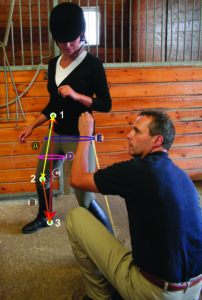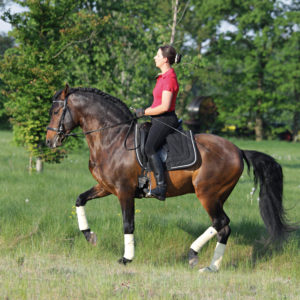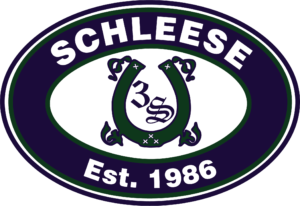Saddle Fit and Custom Saddles
What does “Custom” really mean? What does “Quality” entail? I have to say that one of our competitors in the North American market – the company which uses the concept of ‘custom saddles’ eponymously – was absolutely brilliant in its choice of name. When people talk about their custom saddles you never know whether they are referring to the brand or the actual saddle type they are riding in. On the other hand however, they have somehow missed the boat in honouring what the concept of a ‘bespoke’ product truly means – and in that, the name is actually somewhat disingenuous.
Simply purchasing a saddle that may have been ‘customized’ to fit your horse with a narrow, medium, or wide tree and panel flocking that has been somewhat moved around to accommodate the horse’s back shape does not a custom product make. Neither does your determination of seat size (anywhere from 16” to maybe 19”) with special colour combinations of your choice. There is nothing truly custom about these very superficial choices, I’m sorry. These are personalized options that absolutely will be according to your tastes and requests, however, true customization begins inside the saddle with the tree itself.
For a truly custom saddle, the considerations (particularly for a dressage saddle) need to go beyond those mentioned above to include:

- Twist (that part of the saddle that you feel between your upper inner thigh) – to accommodate the articulation of the hip bones to allow the leg to hang straight
- Stirrup bar placement (women tend to need extended stirrup bars to allow their legs to hand straight because most women’s upper legs are longer than their lower legs which causes them to have a centre of gravity further forward and tends towards the ‘chair seat’ position)
- Cantle height to accommodate both the size and position of the gluteus (butt) muscles
- Seat foam (some women will need more of a ‘push’ from behind to allow them to sit without collapsing back into the saddle because again of the size and shape of the female gluteus muscle and length of the tailbone.
- Flap length and position to ensure proper placement of the leg (in front and behind the leg there should be even amounts of flap showing.
For true customization we even offer our ‘plaster cast’ method – which accommodates riders who may have had hip or pelvic injuries and have specialized needs. Customization begins with the tree. We say that the top of the saddle is made to fit the rider and the bottom is made to fit the horse. It is actually much easier to fit the horse than the rider, because the points mentioned above are still only a part of what true customization entails. For the horse you will want to ensure that the following is taken into consideration:
- Forward facing tree points (to avoid scapular damage during movement)
- Enough clearance at the top and the sides of the wither to allow complete freedom of movement
- Proper angulation of the gullet plate to allow the shoulders to ‘slide through’ when moving
- Asymmetric adjustability at the gullet plate to accommodate the horse’s larger shoulder if necessary to avoid saddle slip during movement
- A gullet channel which is the proper width for a particular horse’s spinal processes
- Saddle length no longer than the saddle support area
- Panel stuffing in the proper shape for the horse’s three-dimensional back
Again – these are just some of the customizations that can be made, and some of the things you can look for when in the market for a new saddle.
But how can you tell if your saddle is “quality” and will have a good resale value?
The difficulty of defining quality is that people tend to associate it with a high price tag. This shouldn’t always be the case, but in many cases it is true that you get what you pay for. Before discussing price, let’s talk about what quality means to us.
When building a quality brand is you should be able to easily recognize it and the company logo from a distance. You can see it, feel it and you don’t necessarily need to be an expert to recognize what you are looking at. Branding helps create the desire to really want it.
When we attend trade shows, we often experience this phenomenon. Many people walk past our stand and come over just to touch the saddles. We hear comments such as, “One day I will be able to afford a Schleese saddle.” We then begin a conversation about value for money, and people are often pleasantly surprised to realize the affordability when all associated expenses with a poorly fitting saddle are considered. A well-made and properly fitting saddle for both horse and riders can save literally thousands of dollars in veterinarian and physiotherapy bills for both. Maintenance fees (i.e., annual diagnostics and adjustment fees) are relatively small in the big picture.
To build a brand based on high quality is a roller coaster of hard work. You have to remain constant in the eyes of the customer in your product, service and branding. The competition never sleeps and there are certainly a plethora of alternatives available! Although it is deemed a huge compliment to be imitated, it also means staying one step ahead with constant innovation. It is definitely a constant uphill climb to ensure that our marketing strategies don’t contradict or jeopardize our brand for the need of a quick sale. To have the ability to keep the standard we are recognized for and compete with every latest trend on the market always keeps us on our toes. We don’t ever deal with the ethical and moral dilemma of selling something which goes against our Saddefit 4 Life® philosophy of protecting horse and rider against long term damage. (Having said that, however – you can subscribe to the S4L philosophy even if you ride a well-fitting inexpensive saddle – recognizing that you will probably have to buy another one every couple of years as your horse changes).
It’s always interesting when our competitors attempt to denigrate us to our mystery shoppers, ‘You don’t need an expensive saddle like a Schleese’ or ‘Why custom made when you can get a good quality saddle from me for a cheaper price’ OR the latest – ‘I don’t know why you feel you need to adjust a saddle to a horse, the horse doesn’t change that much.’
Our answer to these comments: Price shouldn’t compromise quality or the health of your horse.
 So our comment back to our competitors is this: what is the point of having a designer suit that doesn’t fit? You may look good in it, it might be ‘en vogue’ right now but if your suit is too small or too tight, big or baggy, you won’t feel your best and you can’t move with the freedom you would like to. This is exactly how your horse will feel, especially in 6 -8 months’ time when his shape changes and you aren’t able to adjust the saddle to fit – you also need the service and the knowledge of equine back health to be able to adjust the saddle to make it fit again.
So our comment back to our competitors is this: what is the point of having a designer suit that doesn’t fit? You may look good in it, it might be ‘en vogue’ right now but if your suit is too small or too tight, big or baggy, you won’t feel your best and you can’t move with the freedom you would like to. This is exactly how your horse will feel, especially in 6 -8 months’ time when his shape changes and you aren’t able to adjust the saddle to fit – you also need the service and the knowledge of equine back health to be able to adjust the saddle to make it fit again.
Why buy disposable, when you can invest in the highest quality saddle, service and industry knowledge at a similar price point? Our aim is for each customer and horse to be happy – not just now but for many years to come. We are ‘en vogue’ although we are forever changing our hemline. Consider us as the LBD that never goes out of style.
”In order for one to be irreplaceable, one must always be different” Coco Chanel.
Happy Riding!
